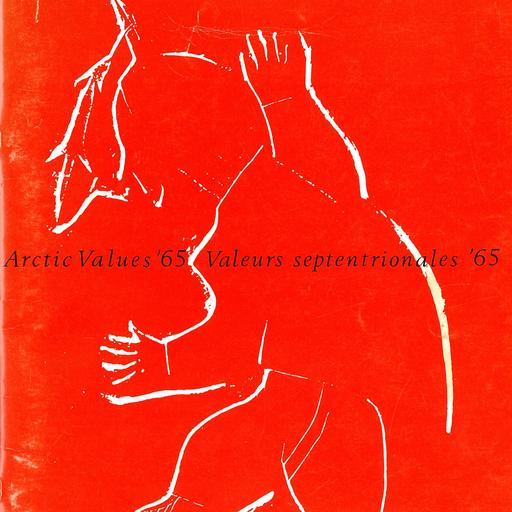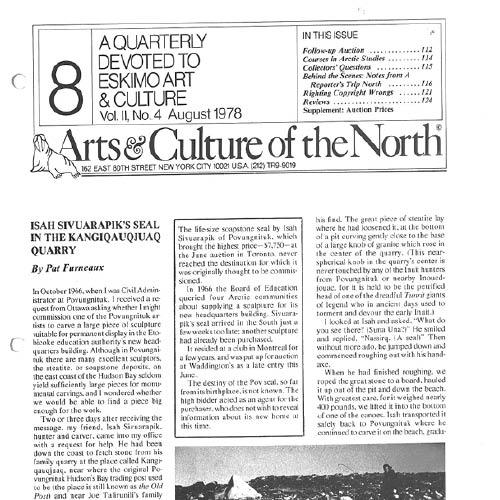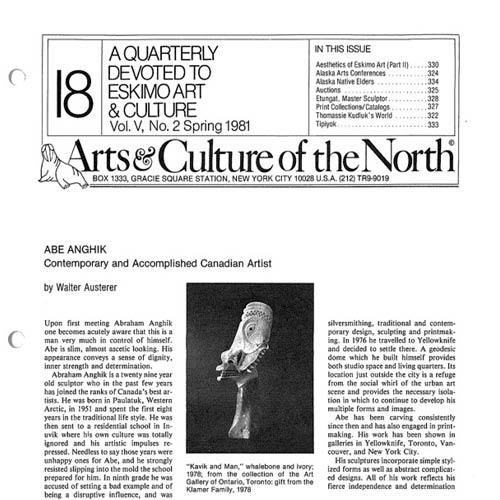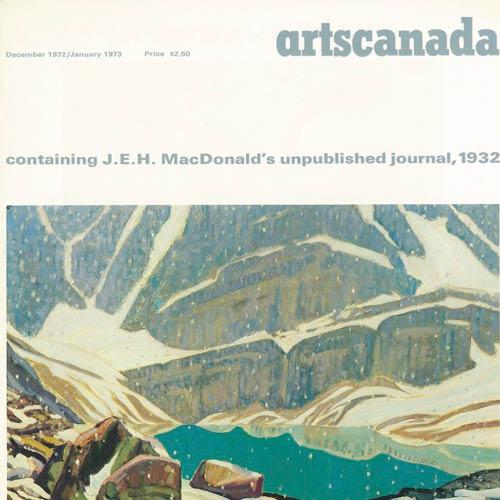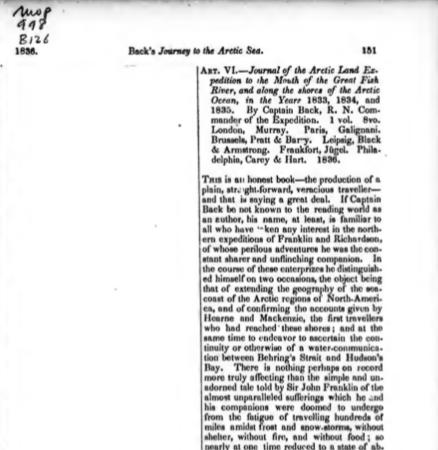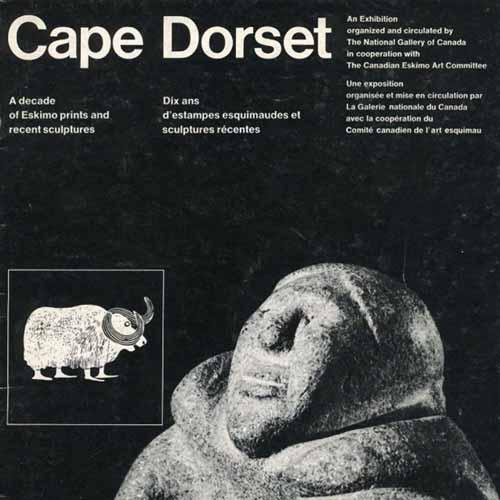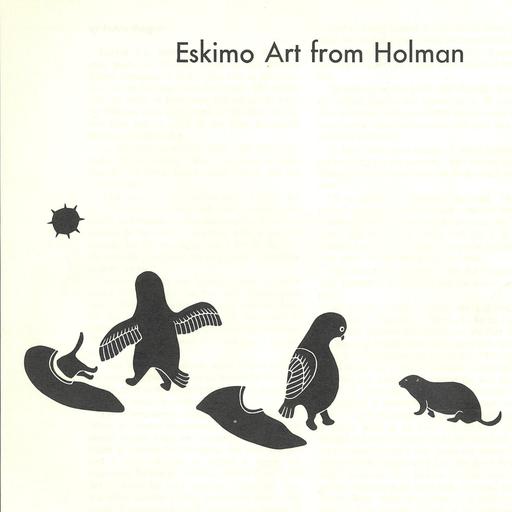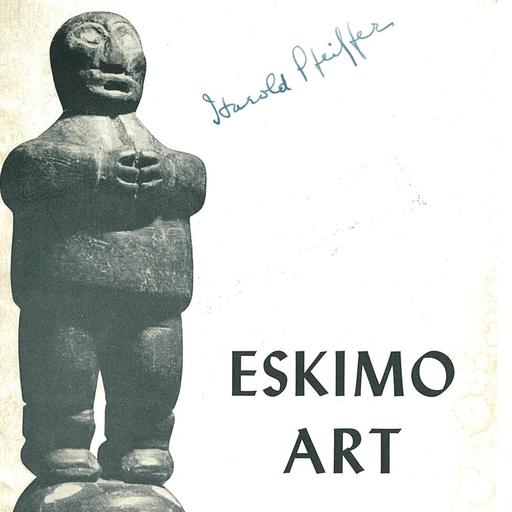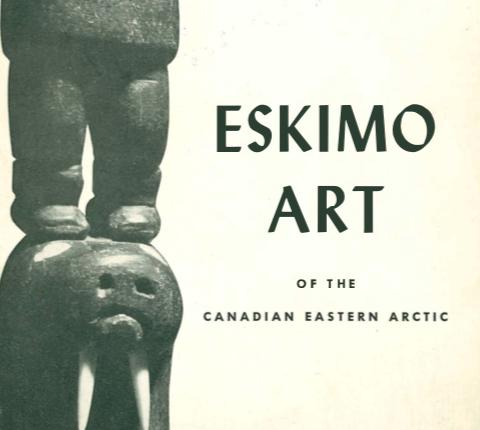Articles
Artscanada - December 1972 / January 1973
Images and Words from Spence Bay, N.W.T - Pam Harris and Judy McGrath
Colonial-like attitudes still grip Canada's Eskimos
By Stanley Meisler, Los Angeles Times (Reprinted in The Citizen, Ottawa, August 26, 1981
It is a cliché of the Third World that symbols of the old and the new are found side by side. The Eskimo hamlet of Pangnirtung, just south of the Arctic Circle, is no different.
Diary of an Arctic Journey by Irene Baird
Frobisher Bay, Baffin Island. Here – 1300 miles north of Montreal – we’re virtually in the city – in an Arctic sense. But not for long.
Eighteenth Annual Report of the American Bureau of Ethnology to the Secretary of the Smithsonian
Eighteenth Annual Report of the American Bureau of Ethnology to the Secretary of the Smithsonian
Eskimo Carvings by James A. Houston
Living a semi-nomadic existence in tents and snow houses along the barren shores of Hudson Bay and Baffin Island, the Eskimos are hindered by a severe climate which prevents food growing - - food, which has always been the life blood of civilization.
